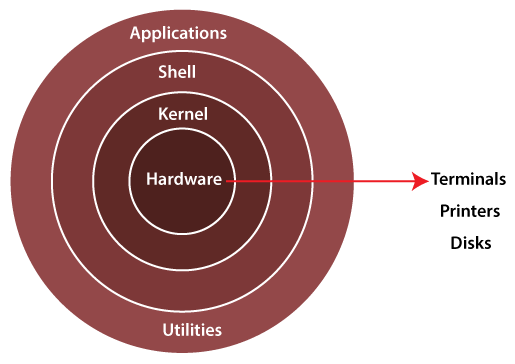Table of contents
No headings in the article.
Just like Windows, iOS, and Mac OS, Linux is an operating system. In fact, one of the most popular platforms on the planet, the kernel is first released on September 17, 1991, by Linus Torvalds.
What is Linux and why it is used?
Linux is a free, open-source operating system, released under the GNU General Public License (GPL). Anyone can run, study, modify, and redistribute the source code, or even sell copies of their modified code, as long as they do so under the same license. Some of the popular flavours of Linux are Ubuntu, Kali Linux, Red Hat, fedora etc.
Linux Architecture

Application:- it is the first layer in Linux architecture and its consists of various applications like cameras, mail, browsers etc.
Shell: Shell is a UNIX term for the interactive user interface with an operating system. The shell is the layer of programming that understands and executes the commands a user enters. In some systems, the shell is called a command interpreter like the Bash shell.
Kernel: It is the heart of Linux that controls how software and hardware interact.
Hardware: It consists of several peripheral devices like CPU, Mouse, Keyboard etc.
Basic Linux Commands:
ls - The most frequently used command in Linux to list directories
pwd - Print working directory command in Linux
cd - Linux command to navigate through directories
mkdir - Command used to create directories in Linux
mv - Move or rename files in Linux
cp - Similar usage as mv but for copying files in Linux
rm - Delete files or directories
touch - Create blank/empty files
ln - Create symbolic links (shortcuts) to other files
cat - Display file contents on the terminal
clear - Clear the terminal display
echo - Print any text that follows the command
less - Linux command to display paged outputs in the terminal
whoami - Get the active username
tar - Command to extract and compress files in Linux
grep - Search for a string within an output
head - Return the specified number of lines from the top
tail - Return the specified number of lines from the bottom
diff - Find the difference between two files
comm - Combines the functionality of diff and cmp
sort - Linux command to sort the content of a file while outputting
export - Export environment variables in Linux
zip - Zip files in Linux
unzip - Unzip files in Linux
ssh - Secure Shell command in Linux
chmod - Command to change file permissions
chown - Command for granting ownership of files or folders
ifconfig - Display network interfaces and IP addresses
wget - Direct download files from the internet
sudo - Command to escalate privileges in Linux
top - View active processes live with their system usage
useradd and usermod - Add a new user or change existing users data
passwd - Create or update passwords for existing users
tac - It is reverse the cat command.
Thanks for reading my blog.Stay connected with me for laerning and sharing .
#90DaysofDevopsChallage #Devops #trainwithsubham.#linux#Day1
LinkedIn: https://www.linkedin.com/in/rahan-hossain-b72521189/
